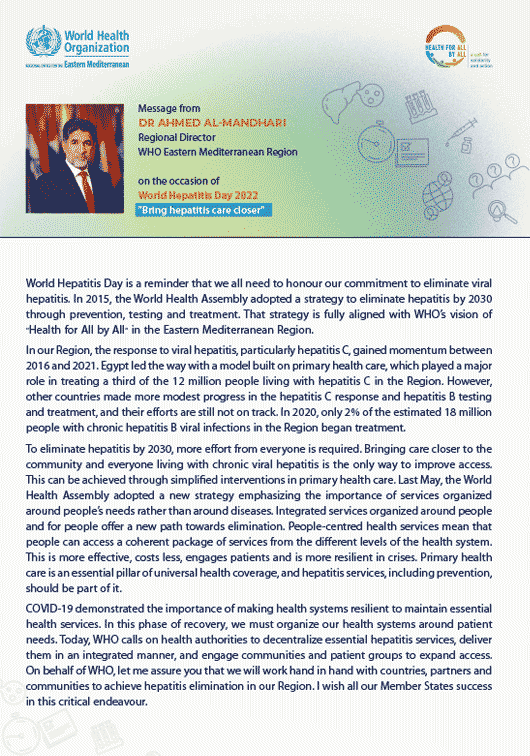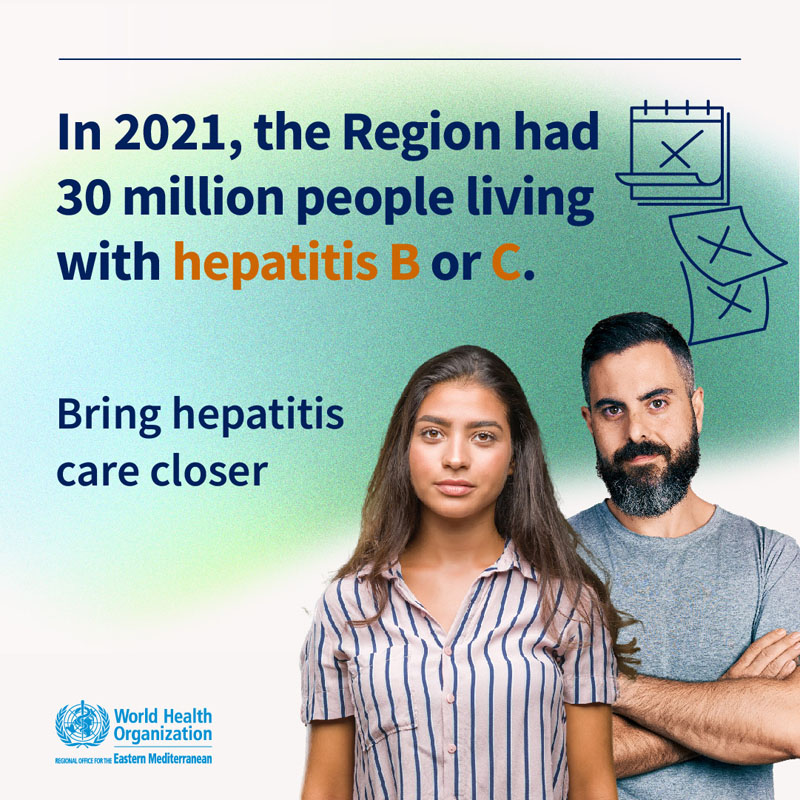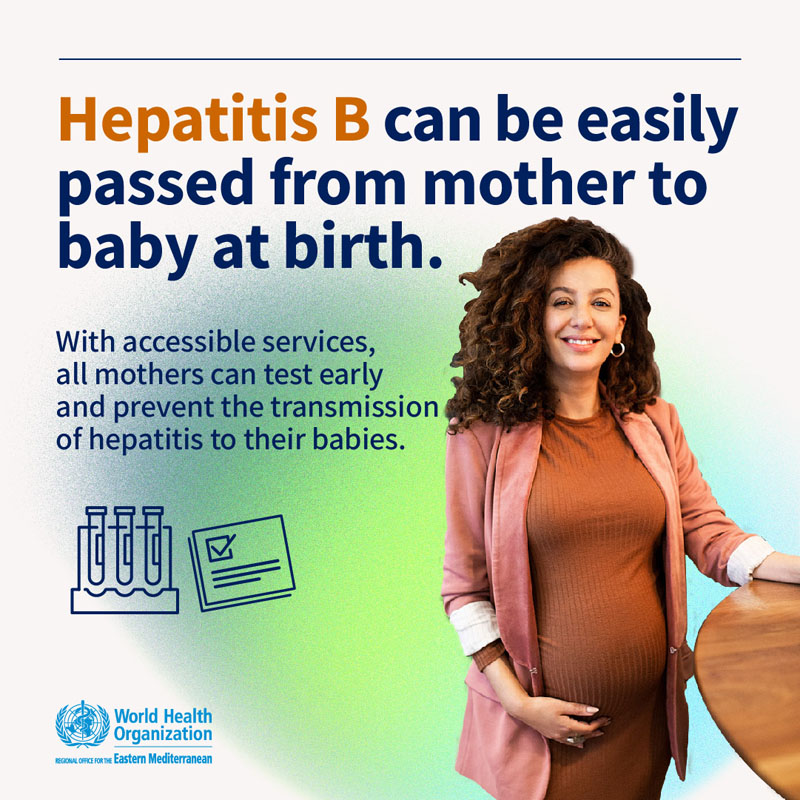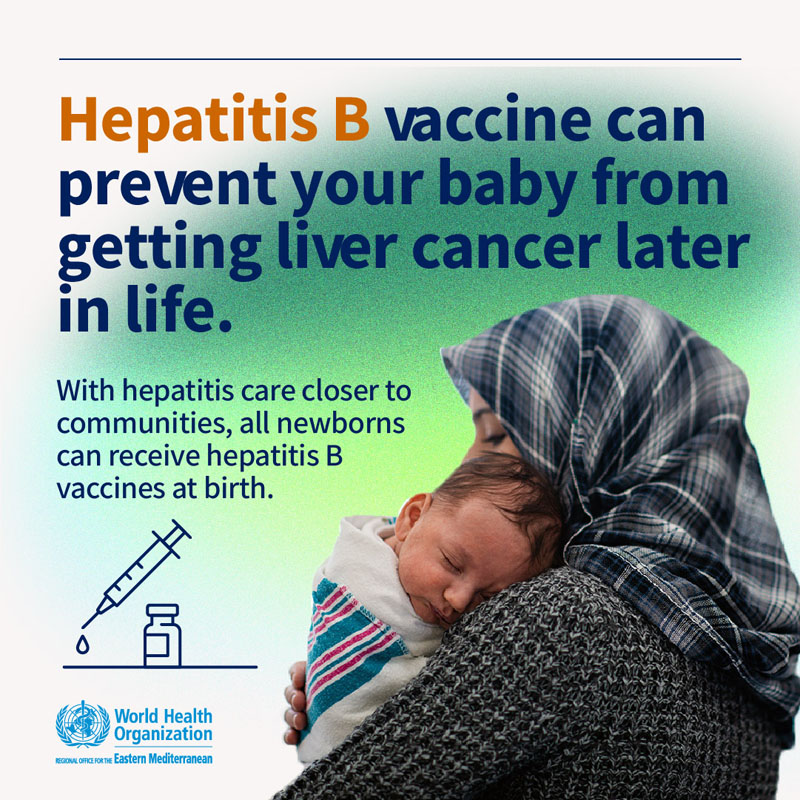World Hepatitis Day 2022
World Hepatitis Day is observed each year on 28 July to raise awareness of viral hepatitis, which causes inflammation of the liver that leads to severe disease and liver cancer.
The world is currently facing a new outbreak of unexplained acute hepatitis infections affecting children. WHO, together with scientists and policy-makers in affected countries, are working to understand the cause of this infection that does not appear to belong to any of the known five types of viral hepatitis viruses: A, B, C, D and E.
Global targets

To achieve hepatitis elimination by 2030, the number of new infections with hepatitis B and C need to be reduced by 90% and hepatitis deaths by 65%.
To eliminate hepatitis and achieve WHO’s ambitious targets by 2030:
- 90% of people living with hepatitis B and/or C should be diagnosed; and
- 80% of those eligible for treatment should be cured of hepatitis C or virally suppressed if they are living with hepatitis B.
This is feasible only if we urgently simplify hepatitis care and make more accessible to more people in need.
WHO is highlighting the need for bringing hepatitis care closer to the primary health facilities and communities so that people have better access to treatment and care, no matter what type of hepatitis they may have.
Health systems that are organized around the needs of people and communities perform more effectively, cost less, increase patient engagement, and are better prepared to respond to health crises. The new Global Health Sector Strategy 2022–2030 calls for integration of hepatitis services and leveraging primary health care (PHC) platforms to make services more accessible to people in need.
The regional hepatitis campaign 2022 is advocating for a health system approach that entails integration of hepatitis services and linkage with PHC.
The objectives of this year’s campaign are to advocate for a system approach for hepatitis services that includes.
- leveraging health systems to deliver essential viral hepatitis services as part of universal health coverage;
- integrating hepatitis testing and treatment with multiple diseases at PHC level with appropriate linkages;
- decentralizing the delivery of hepatitis services when appropriate as a means to expand access to comprehensive people-centred services.
Regional overview of viral hepatitis in the Region, 2020
Hepatitis B
18 million were chronically infected with hepatitis B as of 2021.
Prevalence of hepatitis B among the general public: 2.5 [2.0–3.3].
Prevalence of hepatitis B infection among children under 5: 0.8% [0.5–1.1].
Estimated people dying from hepatitis B: 33 000 [26 000–60 000].
Hepatitis C
12 million were chronically infected with hepatitis C as of 2021; still the highest burden globally.
Prevalence of hepatitis C among the general public: 1.6% [1.4–1.8].
Estimated people dying from hepatitis C: 31 000 [31 000–74 000].
People living with hepatitis B infections among the general population, by WHO region
People living with hepatitis C infections among the general population, by WHO region
Regional progress as per the 5 key interventions of the Global Health Sector Strategy 2016–2021
| Interventions | Indicators | Regional baseline 2015 | Regional coverage 2020 |
|---|
| Hepatitis B vaccination | Coverage of third dose of hepatitis B vaccine among infants | 80% | 82% |
| Hepatitis B infection mother-to-child transmission | Coverage of timely hepatitis B vaccine birth dose (within 24 hours) | 23% | 35% |
| Blood safety | Blood screening coverage | 81% | 82% |
| Injection safety | Facility-level injection safety | NA | 14% unsafe injections in 2017 |
| Harm reduction | Number of sterile needles and syringes provided per person who injects drugs per year | 25 | 27 |
| Hepatitis B testing | People living with hepatitis B diagnosed | 1.7% | 14% |
| Hepatitis C testing | People living with hepatitis C and/or B diagnosed | 18% | 37% |
| Hepatitis B treatment | Initiation for HBV | 0.5% | 2% |
| Hepatitis C treatment | Treatment coverage | 12% | 33% |
Campaign materials
Regional Director's message
World Hepatitis Day is a reminder that we all need to honour our commitment to eliminate viral hepatitis. In 2015, the World Health Assembly adopted a strategy to eliminate hepatitis by 2030 through prevention, testing and treatment. That strategy is fully aligned with WHO’s vision of "Health for All by All" in the Eastern Mediterranean Region.








